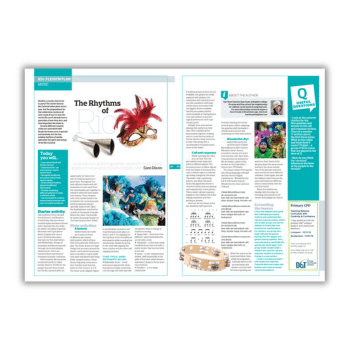Brazil is a country that loves to party! Several different musical styles are associated with Brazil: the bossa nova, tropicalia and lambada, but the fast, pulsing rhythms of samba music epitomise the spirit and energy of the Rio Carnival.
The world-famous carnival takes place once a year, but the preparations for this celebration continue all year round. If you’ve seen the movie Rio, you’ll already have a good idea of how they do it, and how important the music is.
Lesson objectives
- Learn about Brazil and the Rio Carnival
- Understand the ‘call and response’ used in samba music
- Recognise traditional percussion instruments used in samba
- Read notated rhythms, played on different instruments
- Practise combining different patterns to make a cohesive whole
- Use movement to create a samba band procession with a pre-recorded soundtrack
Starter activity
Ask students if they can find South America and Brazil on a world map. Discuss various musical styles and dances found there.
Describe the city of Rio de Janeiro, including Sugarloaf Mountain and Copacabana Beach. Explain that once a year a festival takes place that lasts for five days before Ash Wednesday.
Groups of musicians and dancers parade through the streets playing samba music. There are colourful floats and dancers dressed in fantastic costumes.
Unfortunately, Rio has areas of extreme poverty, called favelas (slums). The life for the people who live there is hard, but the Rio Carnival offers an opportunity for them to be part of a festival and have a great time.
Throughout the year different bands with 100 musicians or more, each from the communities, get together to rehearse with their percussion instruments. They compete with other samba bands to be included in the carnival parade, which progresses along a specially made street called the Sambadrome, watched by crowds of thousands of people.
Sam Dixon teaches class music at Brighton College Pre-prep and Prep school.













